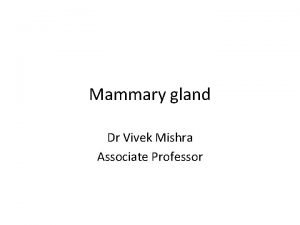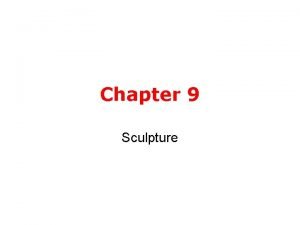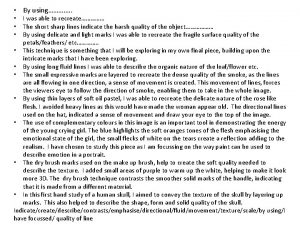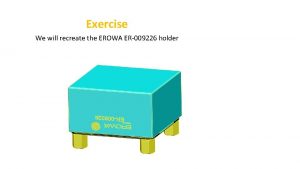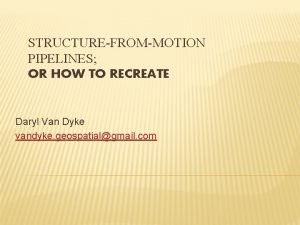Do Now Using the materials provided recreate what













- Slides: 13

Do Now: • Using the materials provided re-create what you remember about synaptic transmission from AS

Learning Objective: to explore biological explanations of mood disorders • (ALL) will be able to describe and evaluate at least one biological explanation of mood disorders (C) • (MOST) will be able to explain in further detail descriptive and evaluative comments for two biological explanations of mood disorders (B) • (SOME) will also be able to analyse biological explanations of mood disorders, including the role of the debates (A)

Do Now: linking to our learning • Using the materials provided re-create what you remember about synaptic transmission from AS • Which neurotransmitter do you think this is? • How might it link to unipolar and bipolar disorder?

Neurochemical explanations of mood disorders • The area of the brain known to play a role in emotion is the LIMBIC SYSTEM • Neurotransmitter pathways link the limbic system to: other parts of the brain; the endocrine system and the autonomic nervous system

Neurochemical explanations of mood disorders • In the synaptic cleft, neurotransmitters are only active for a short time • After this time they are either destroyed or reabsorbed by the pre-synaptic neuron (this is known as ‘re-uptake’) • Tricyclic anti-depressants block this reuptake process therefore increasing the availability of the neurotransmitters

Neurochemical explanations of mood disorders • Based on the effects of these drugs it was claimed that depressions results from an insufficiency of neurotransmitters (specifically noradrenalin and serotonin) • Whereas mania results from too much

Evaluation of the neurochemical explanation of mood disorders • (-) anti-depressant medications were discovered that DID NOT have the same effects (they didn’t increase the availability of neurotransmitters) • (-) anti-depressants IMMEDIATELY increase the levels of neurotransmitters but it can take several weeks for depression to lift • (-) evidence suggests that a simple increase in neurotransmitters DOES NOT explain why the drugs relieve depression. It is now suggested that an interaction between various neurotransmitters occurs

Main Activity: pre-reading strategy • • • NEUROANATOMICAL Limbic system Regulatory Hypoactivation Diathesis stress model TWIN STUDIES Concordance rate Amish Heterogeneous LITERACY LINK! In order to make your understanding of these explanations easier you are going to look up the meanings of the key terms on the left using a dictionary site on your phones. Then, when you come to the actual explanation the most difficult bits should already make sense!

Pre-reading strategy: images twin studies

Pre-reading strategy: images neuroanatomical

Main: over to you • Twin Studies and Neuroanatomical explanations – use colour • Study partners – summarise the information on twin studies or neuroanatomical explanations (depending on which you choose) onto your post-it notes • TEACH IT • THEN both make a note of the KEY POINTS of each theory

Reviewing our learning • ‘Outline and evaluate biological explanations of mood disorders’ (12 marks) Homework: due 1 week today – remember all your learning so far when you come to do this essay and make it your best yet! Comparisons (look ahead!) – next lesson is Cog explanations Debates Strengths, Weaknesses Implications – treatments?

Meta Puddings – choose one of these and write down your answer in full to summarise your learning today • How are you going to remember this learning? • What is the key aspect you will remember from this lesson? • What has this lesson reminded you of? • Which senses were most important in today’s learning? • What did you learn today that you didn’t know before? • What have you learned that could be useful elsewhere? • What have you learned elsewhere that is like this? • How will you apply what you have learnt?
 Mammary gland
Mammary gland Figure out the words using the clues provided
Figure out the words using the clues provided Now i see it now you don't
Now i see it now you don't Man made materials
Man made materials Adopting and adapting teaching materials
Adopting and adapting teaching materials Natural materials and man made materials
Natural materials and man made materials Direct materials budget with multiple materials
Direct materials budget with multiple materials Example of useful and harmful materials
Example of useful and harmful materials Rewrite the sentences again
Rewrite the sentences again Now write a slogan using bandwagon techniques.
Now write a slogan using bandwagon techniques. George segal paintings
George segal paintings øis
øis Insulating materials grade 7
Insulating materials grade 7 Nguyên nhân của sự mỏi cơ sinh 8
Nguyên nhân của sự mỏi cơ sinh 8
